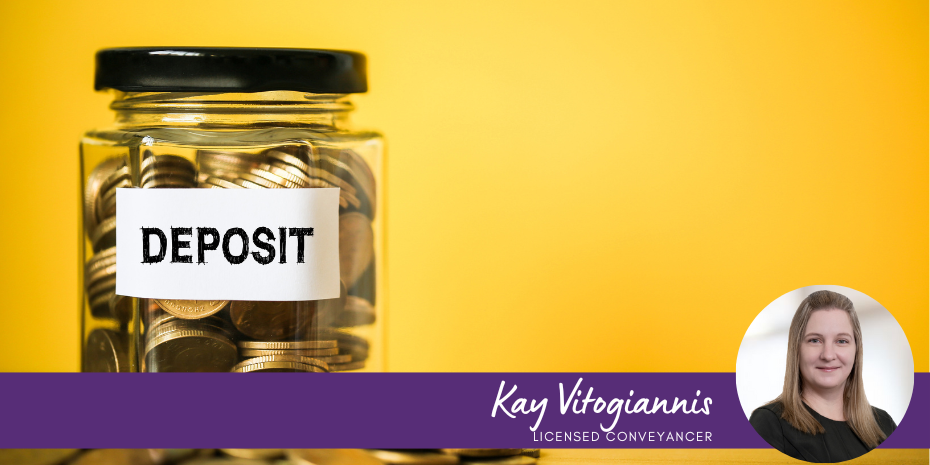KEY TAKE OUTS:
- How does the release of deposit work in NSW?
- Positives of release of deposit in NSW for Vendors?
- Negatives of release of deposit in NSW for Purchasers?
How does the release of deposit in NSW work?
A purchaser must pay a deposit when signing a Contract for Sale.
Within the special conditions of a Contract for Sale the vendor can include a clause which is commonly known as a “Release of Deposit” clause, which allows the vendor access to the deposit funds paid by the purchaser prior to settlement.
Some agents also push for the deposit to be released prior to completion so that their commission fees can be paid earlier also.
What are the positives of release of deposit in NSW for Vendors?
There are many reasons a vendor may wish include a Release of Deposit clause in a Contract for Sale for example:
- Use the deposit funds for a deposit on a purchase for themselves
- Use the deposit funds to pay Stamp Duty on a purchase for themselves
- Use the deposit funds to pay outstanding Land Tax on the property they are selling etc.
If the purchaser does not comply with the contract, the vendor is entitled to keep/recover the full deposit.
Having the deposit released prior to settlement carries many benefits and little risk for a vendor.
What are the negatives of release of deposit in NSW for Purchasers?
There is a real risk for a purchaser if they agree to any or all of the deposit being released to the vendor or as the vendor directs, prior to settlement.
Although any deposit funds released prior to completion are a charge on the land in favour of the purchaser, until termination or completion, there is still a risk that the if the purchase is unsuccessful, it could be difficult to recover the funds released. There is also the fact that a purchaser’s right to recover the deposit may stand behind the rights of others e.g. mortgagee.
It is advisable that if a vendor insists on the release of deposit funds it be released only into a real estate agent or solicitors trust account, and not further released. This way you will know where the funds are should the settlement/completion not occur, and it is easier to recover the funds. Funds held in a trust account can only be released with the authority of both parties, therefore you can ensure the funds will not be further released without your knowledge.
Should the deposit funds be released directly to the vendor, and the Contract does not complete it can be a lengthy and costly process in order to claw back the deposit funds.
This is important not only when dealing with individual vendors but possibly even more so when dealing with a vendor who is a company. For example, in 2019 The Ralan Group was developing residential and commercial properties and had purchasers agree to deposit releases. The Ralan Group then went into administration. Those purchasers whose deposit funds were released were then unsecured creditors in line behind many other creditors.
It is vital that you speak to a conveyancer in order to ensure firstly that deposit funds are not released at all or that any release of deposit that is required contains as minimal a risk as possible and your conveyancer can ensure this by negotiating amendments to a release of deposit clause and stipulating the terms on which the deposit funds can be released.
ABOUT KAY VITOGIANNIS:

Kay joined the Coutts team in May 2021 working as a Licensed Conveyancer within our Property & Conveyancing team, based in our Narellan office.
Kay has over 20 years of experience in the Legal industry. She began her journey in CBD Conveyancing firms as a secretary and attained her Advanced Diploma in Conveyancing in December 2010.
For further information please don’t hesitate to contact:
Kay Vitogiannis
Licensed Conveyancer
info@couttslegal.com.au
1300 268 887
This blog is merely general and non specific information on the subject matter and is not and should not be considered or relied on as legal advice. Coutts is not responsible for any cost, expense, loss or liability whatsoever in relation to this blog, including all or any reliance on this blog or use or application of this blog by you.



